Pinpointing The Voice Of A Nation
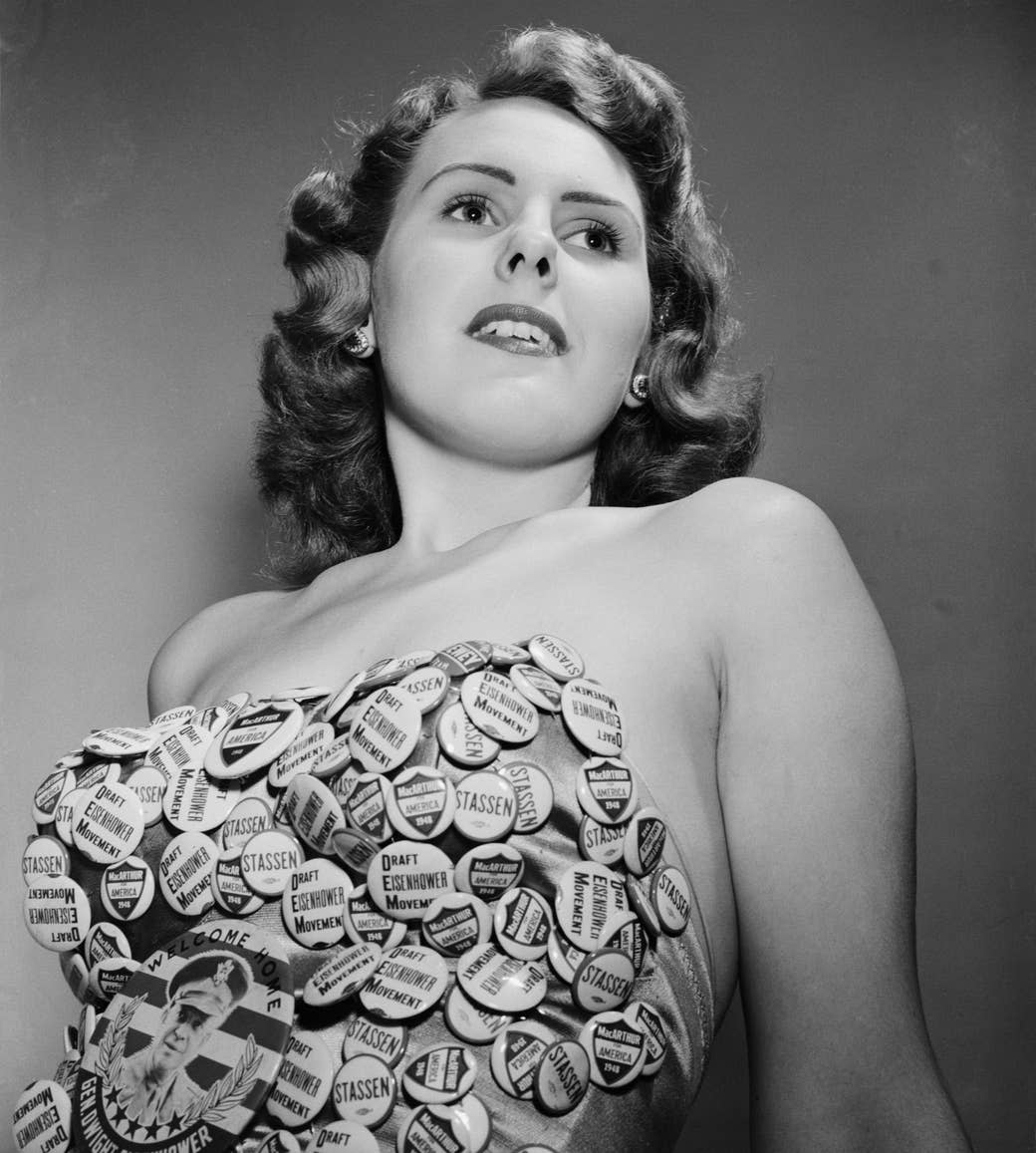
Barbara Grand-Bergh wears dozens of campaign buttons for Republican candidates Harold Stassen and Dwight Eisenhower. The buttons are pinned to her bathing suit.
As early as George Washington’s presidency, Americans have wanted not only to be vocal, but also visual about their support for different political movements. Emblazoned with faces, slogans, and poignant artwork, political buttons have been a steadfast touchpoint for our national discourse.
The popularity of pins as a campaign strategy rose to prominence in 1896 during the heated presidential race between William McKinley and William Jennings Bryan. This was the first instance of a mass-produced button in US politics, which kicked off a golden age of political buttons. From there, the production of political buttons boomed into the millions, becoming a staple for every candidate, issue, manifesto, movement, and inauguration. Sourced mainly from the Rothstein Political Button Collection at Harvard Kennedy School Collection, a survey of the history of campaign pins reveals that we are still fighting about the same things today.
In advance of the 2022 midterm elections, BuzzFeed News took a pointed look into the history of campaign pins, from the weird to the terrifying.
What’s New Is Old Again
Unfortunately, we’re still fighting the fights. From fair labor practices to abortion rights, we’ve found ourselves back where we started. These buttons address the rise of antisemitic sentiments, the legacy of Reagan’s war on drugs, and political leaders deciding what freedoms we have over our bodies. Sound familiar?
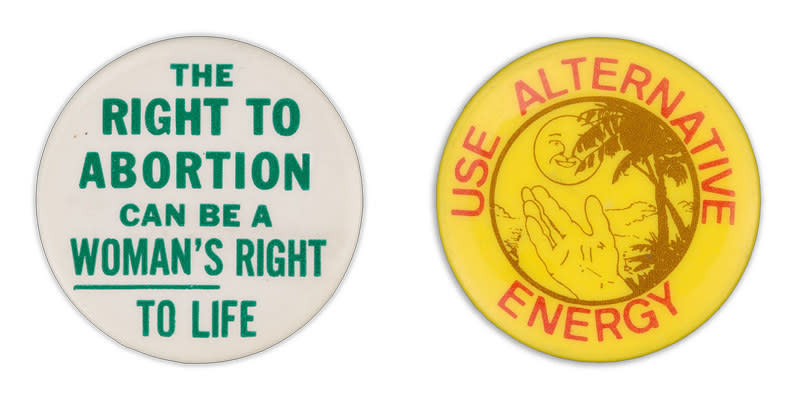
A pro-abortion button and a pro–alternative energy button from unknown dates
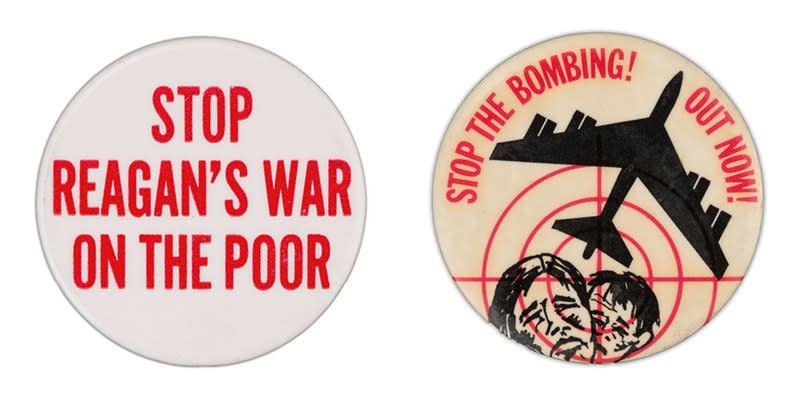
An anti-Reagan button from 1984 and an anti–Vietnam War button from an unknown date
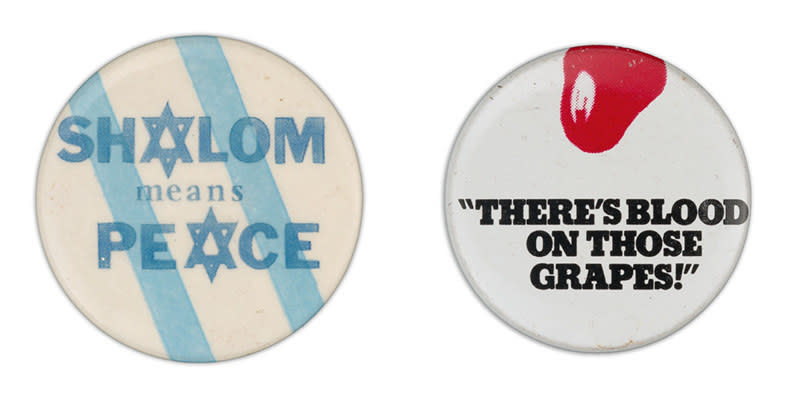
A button calling for peace in Israel and a button calling for the boycott of grapes, both from an unknown date
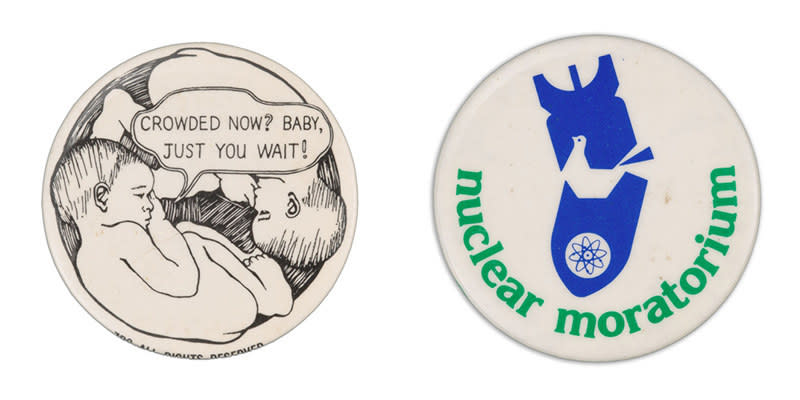
A pro-abortion button and an anti-nuclear war button, both from unknown dates.
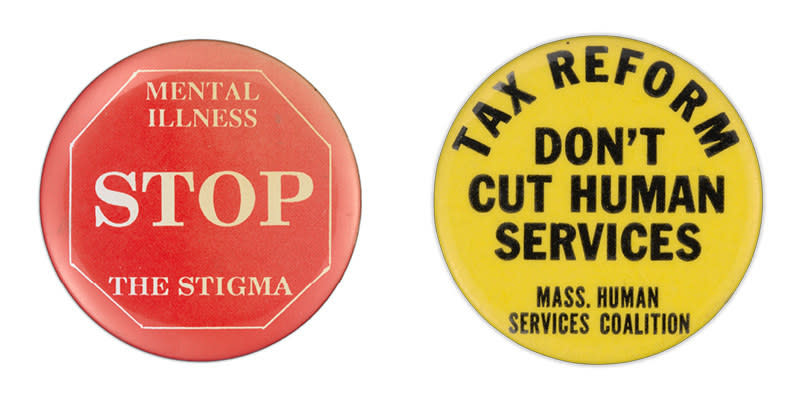
A button against the stigmatization of mental illness and a button supporting tax reform, dates unknown.
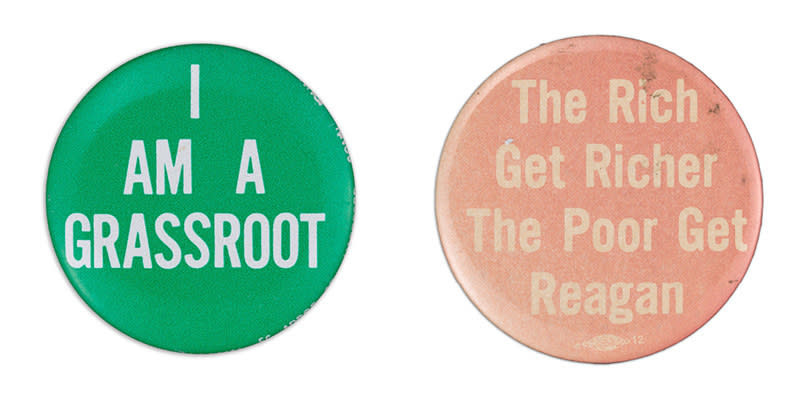
A pro–grassroots organization button, date unknown, and an anti-Reagan button from 1984
Thinking Outside of the Circle
A campaign button isn’t just a political statement — it can also be a fashion statement. With many styles of buttons going in and out of style, the politically active citizen of the day had a few choices to make. The original and most enduring buttons are celluloid buttons, metal buttons with a design printed on paper and then reinforced with a clear plastic layer on top. In 1916, innovative button designers began producing buttons that printed the design directly onto metal. This allowed for uniquely shaped designs and simpler production, though ultimately the ubiquity of the familiar round button would never go out of style.
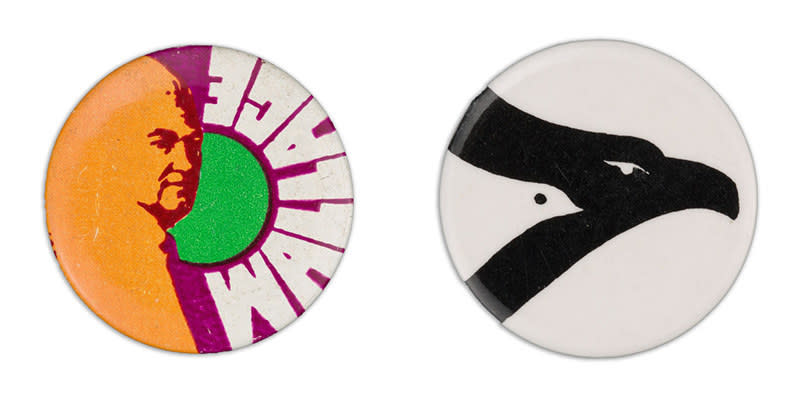
A pro-George Wallace button and a pro-peace button, dates unknown
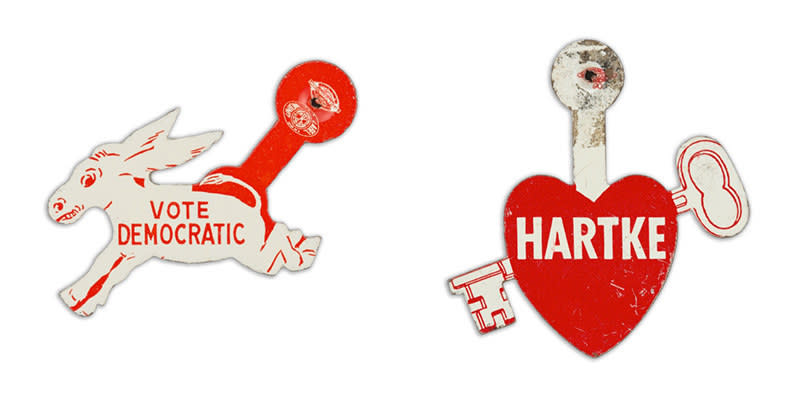
A pro–Democratic Party button, date unknown, and a pro-Senator Vance Hartke button from 1972.
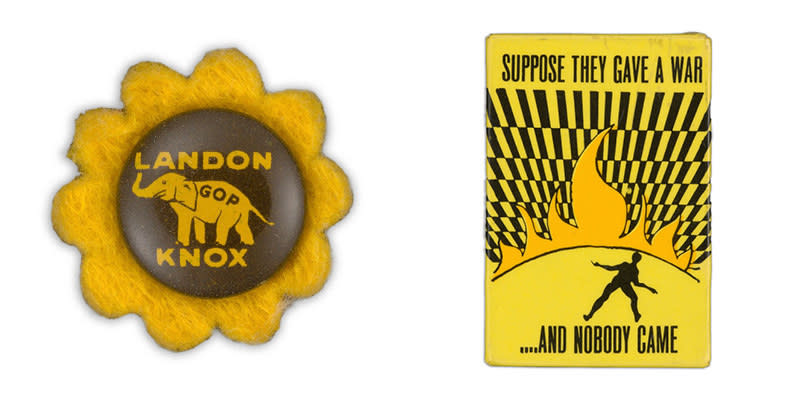
A pro–Landon Knox button from 1936, and an anti–Vietnam war button, date unknown.
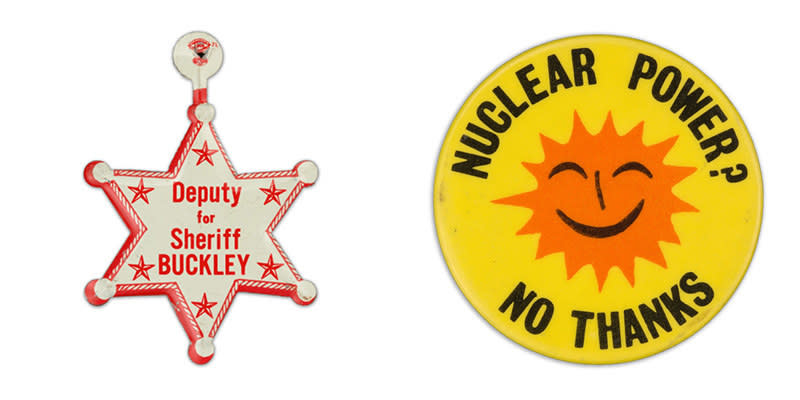
A campaign button for "Buckley for sheriff" button from 1974, and an anti–nuclear power button, date unknown.
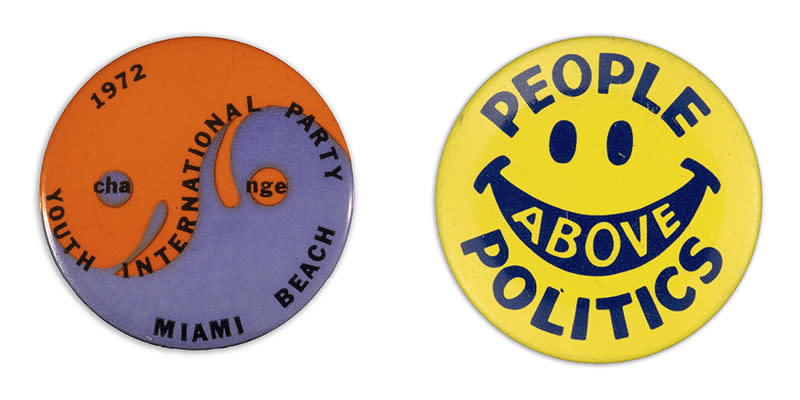
A Youth International Party button from 1972 and a pro–political reform button, date unknown.
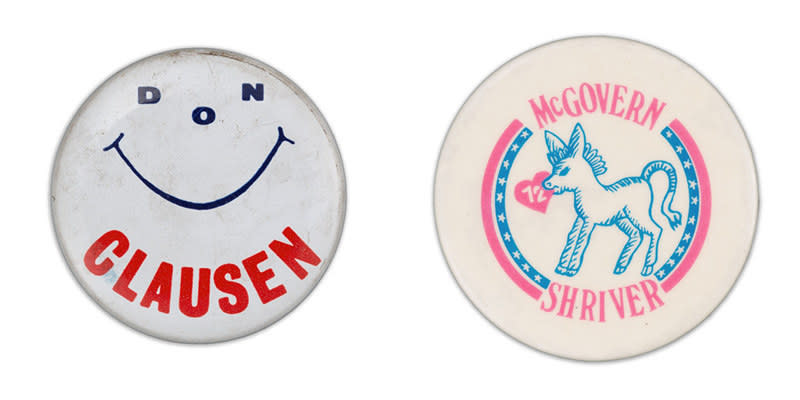
A Don Clausen button, and a McGovern–Shriver button from 1972.
(P)In on the Joke
Humor has always been a great way to get a message across. Whether it was originally intended as a joke or not, without the context of the political moment, we can use humor as a coping mechanism to get through another day.
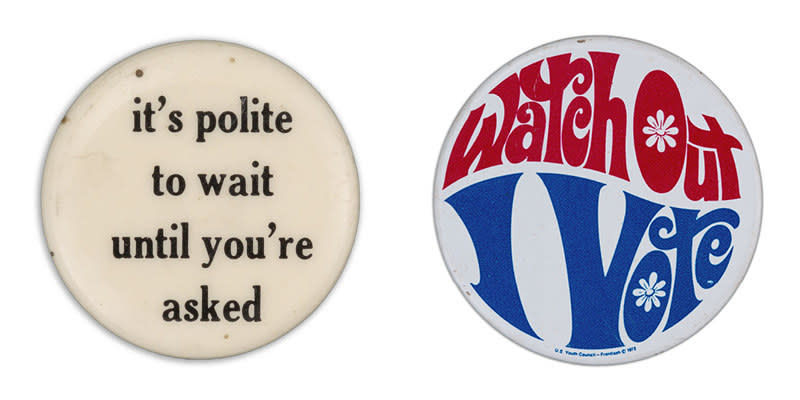
Funny buttons that are pro-voting, dates unknown
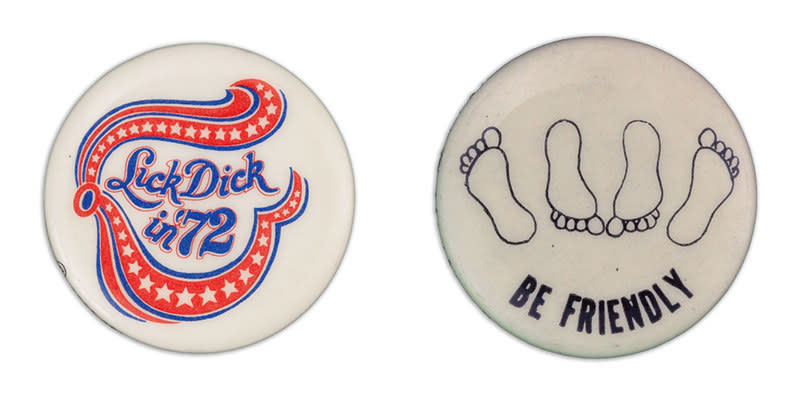
An anti–Richard Nixon button from 1972 and a suggestive button, date unknown
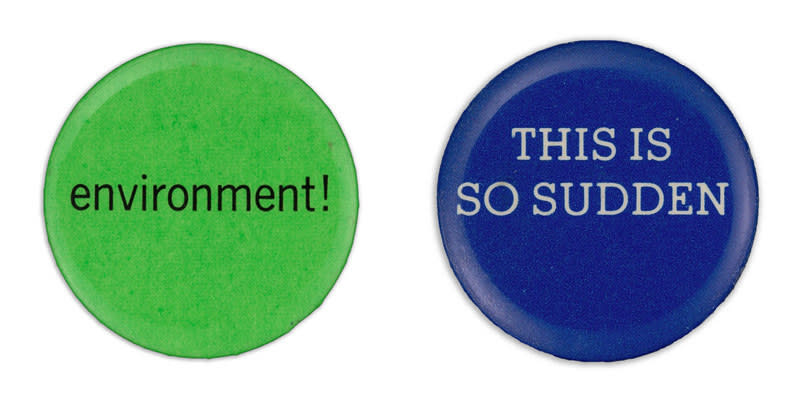
Two funny buttons, dates unknown
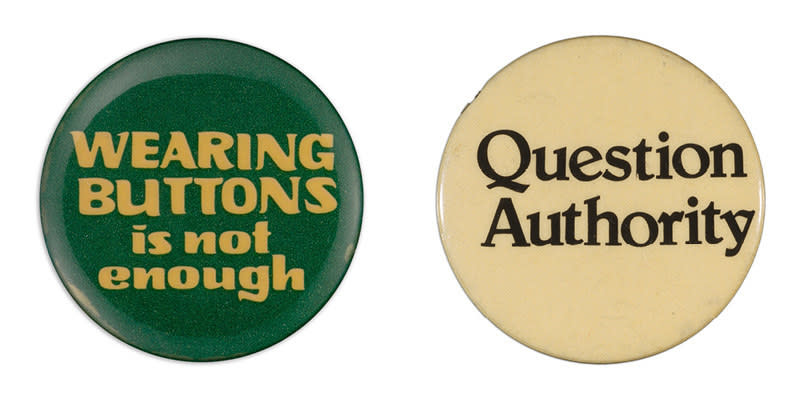
Two funny buttons from the 1970s
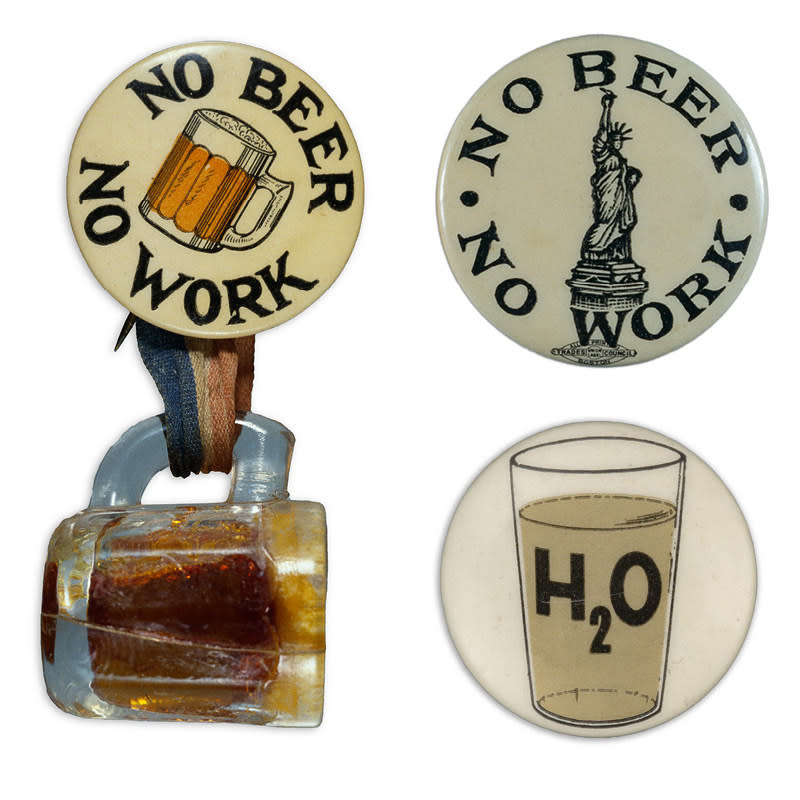
Three buttons against prohibition
Dark Sentiments
Some buttons are a reminder of a dark not-too-distant past. The violent sentiments of xenophobia and pro–Vietnam War buttons reflect an ugly side of the nation. Keeping our past in view as we move forward can give us the insight we need to face similar situations the future holds.
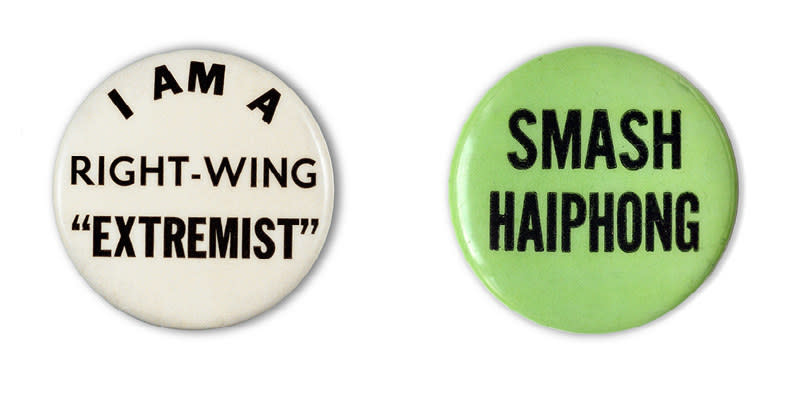
A right-wing extremist button and a pro–Vietnam War button
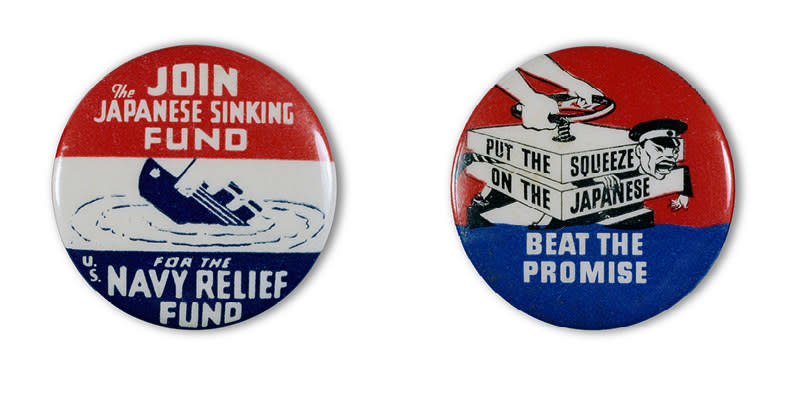
Two buttons opposing Japanese involvement in World War II
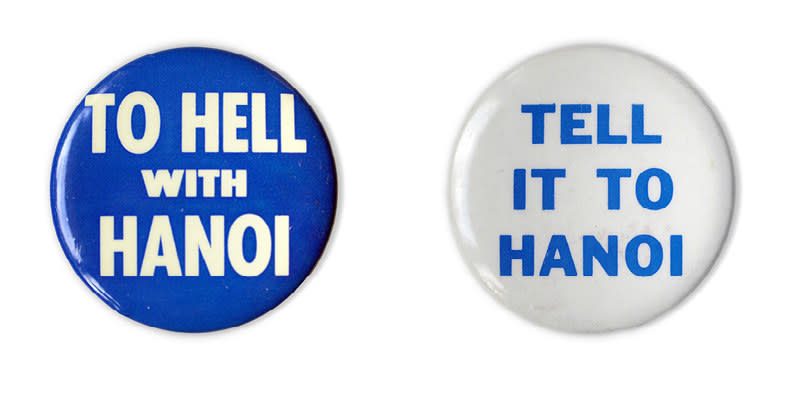
Two pro–Vietnam War buttons
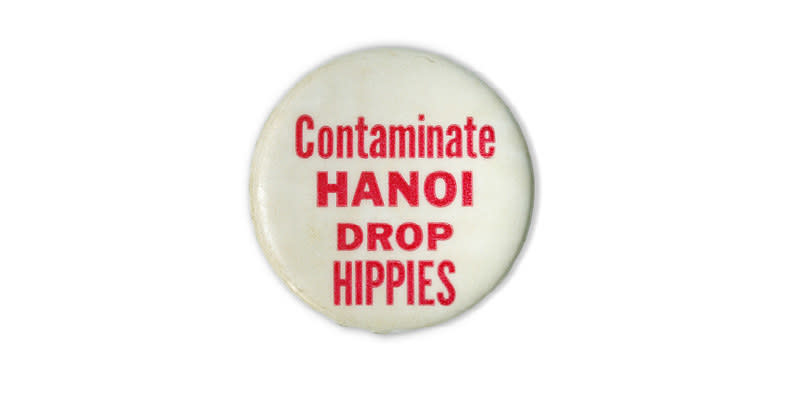
A pro–Vietnam War button
Got to the Point
Here’s to the winners! These buttons had what it took to endure the long road of the political campaign to victory. Is simpler better? Take notes!
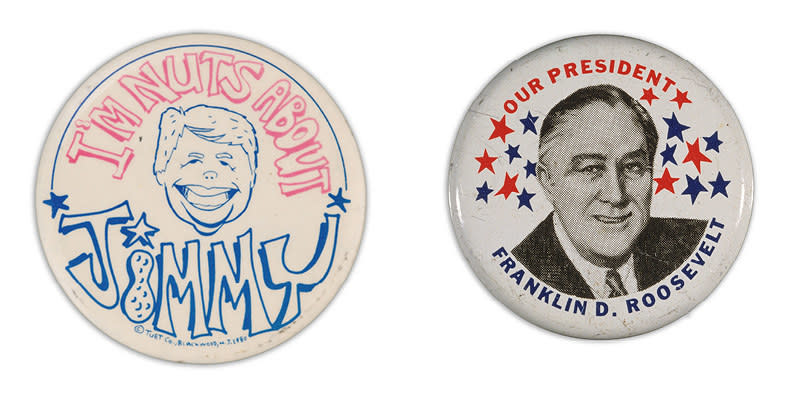
An "I'm Nuts About Jimmy" button, supporting Jimmy Carter for the 1980 United States presidential election, and a pro–Franklin Delano Roosevelt button, circa 1936.

A Henry Jackson button from 1972 (left) advertising him as "the only moderate in 1972" and a button promoting Rep. Adam Clayton Powell (right) using his popular expression "Keep the Faith, Baby."
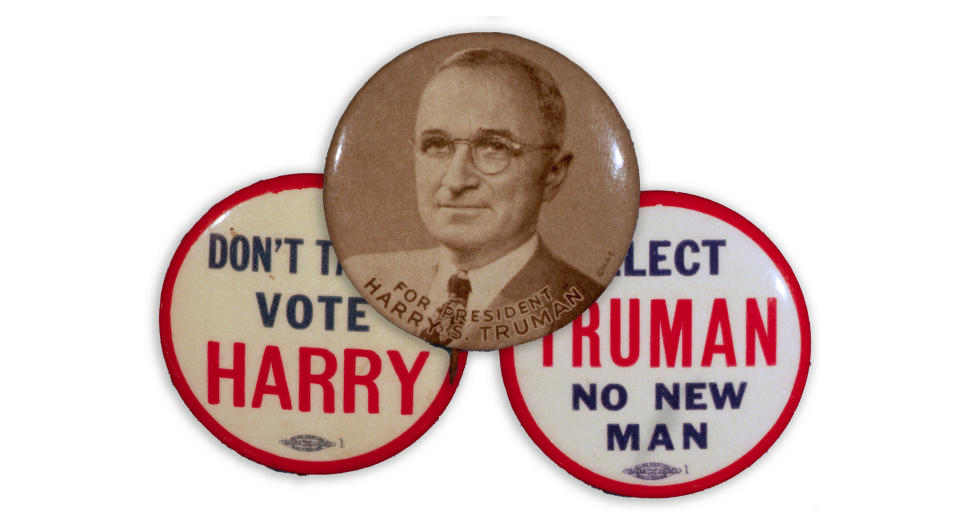
Buttons used in Harry Truman's 1948 campaign. Slogans read: "Don't tarry, vote Harry" and "Elect Truman, no new man."
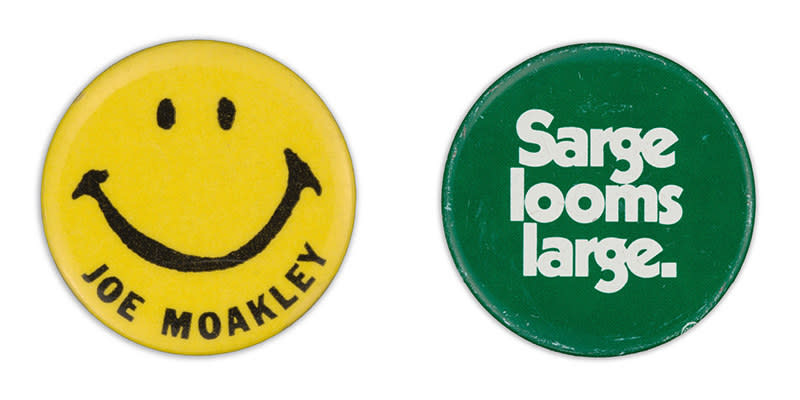
A smiley button promoting former Massachusetts representative Joe Moakley from 1972 (left), and a "Sarge Looms Large" pin for former Massachusetts governor Francis Sargent from 1970.
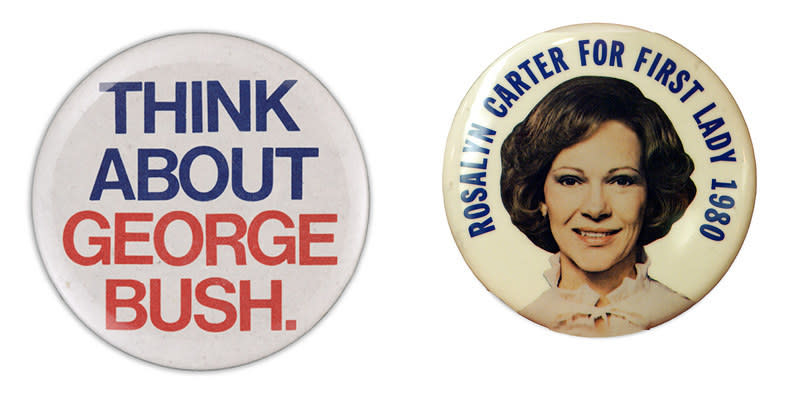
A "Think About George Bush" button from the 1988 presidential election (left), and a pro–Rosalyn Carter pin (right) from Jimmy Carter's 1980 reelection campaign
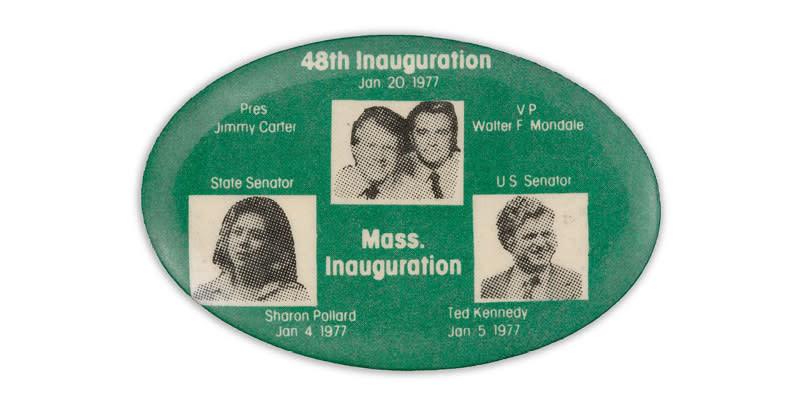
A button promoting the Jan. 20, 1977, inauguration of Jimmy Carter and Walter Mondale

